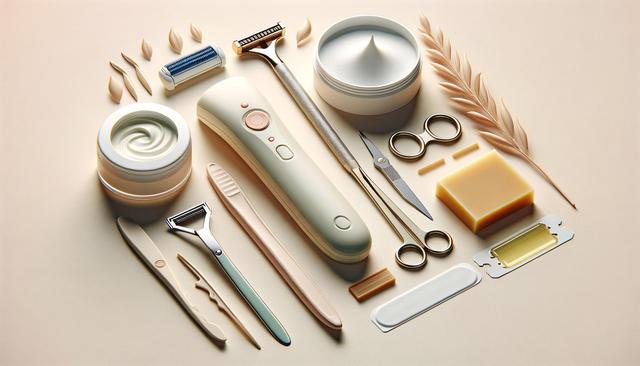Understanding the Causes of Facial Hair Growth
Before exploring solutions, it’s helpful to understand why facial hair appears more prominently for some individuals. Factors such as genetics, hormonal imbalances, and certain medical conditions can contribute to hair growth on the face. For instance, conditions like polycystic ovary syndrome (PCOS) can cause excess facial hair due to increased androgen levels. Identifying the underlying cause is important, as it may influence the choice of hair removal method. Consulting a healthcare professional can help determine whether medical treatment is necessary alongside cosmetic solutions.
Facial hair is completely natural and varies from person to person. However, for those seeking permanent reduction, there are safe and proven methods available. These methods aim not just to remove existing hair but also to reduce future growth effectively over time. Options range from advanced clinical treatments to natural remedies, and choosing the right one depends on individual needs, skin type, and budget.
Laser Hair Removal: A Long-Term Option
Laser hair removal is among the most widely used solutions for long-term reduction of facial hair. This method uses concentrated light to target and damage hair follicles, which slows down or stops future growth. It’s considered safe when performed by a qualified professional and is suitable for various skin types, although results may vary depending on hair color and skin tone.
Some key points about laser hair removal include:
- It typically requires multiple sessions spaced a few weeks apart.
- Common treatment areas include the upper lip, chin, and sideburns.
- Temporary redness or irritation may occur but usually subsides quickly.
While laser treatment doesn’t guarantee complete hair removal for everyone, many users experience significant long-term reduction. Maintenance sessions may be needed to sustain results, especially for hormonal or genetic hair growth patterns.
Electrolysis: A Certified Permanent Solution
Electrolysis is the only method approved by regulatory authorities for permanent hair removal. It involves inserting a fine probe into each hair follicle and applying an electric current to destroy it. Unlike laser treatments, electrolysis works on all hair and skin types, making it a versatile option for a wide range of users.
Key benefits of electrolysis include:
- Permanence: Once a follicle is treated successfully, hair does not grow back.
- Precision: Each follicle is targeted individually, allowing for detailed shaping.
- Suitability for all tones and textures.
However, electrolysis can be time-consuming since each hair is treated individually. It may also require multiple sessions to achieve full results, especially in areas with dense growth. That said, for those looking for a permanent and inclusive solution, it remains an outstanding choice.
Natural Remedies and At-Home Techniques
While professional treatments offer long-term results, some individuals prefer natural or at-home methods for managing facial hair. These options are generally more accessible and budget-friendly, although they may not provide permanent outcomes. Certain natural ingredients are believed to reduce hair growth over time or weaken hair roots, making removal easier.
Some commonly used natural remedies include:
- Turmeric paste combined with milk or water, applied regularly to the skin.
- Papaya and turmeric mixtures, which may help break down hair follicles.
- Sugar and lemon scrubs, which act as natural exfoliants and hair lighteners.
These remedies should be used consistently over time and with proper skin care practices. It’s important to perform a patch test before applying any natural mixture to ensure there are no allergic reactions. While these methods may not eliminate hair permanently, they can complement more permanent solutions by reducing hair thickness and visibility.
Precautions and Aftercare for Facial Hair Removal
Whatever method you choose, following proper aftercare is essential to protect your skin and maintain effective results. Facial skin is sensitive, and improper handling after hair removal can lead to irritation, infection, or scarring. Establishing a gentle skincare routine can help soothe the skin and prevent complications.
Aftercare tips include:
- Avoid direct sunlight and always apply sunscreen to protect treated areas.
- Use mild cleansers and avoid harsh exfoliants for a few days post-treatment.
- Apply soothing agents such as aloe vera or fragrance-free moisturizers.
It’s also advisable to avoid makeup immediately after professional treatments to allow the skin to breathe and heal. If any unusual reactions occur, consulting with a dermatologist or licensed practitioner can ensure that proper steps are taken to address them.
Conclusion: Choosing a Safe and Effective Path to Hair-Free Skin
Removing facial hair permanently is a personal decision and depends on a variety of factors including skin sensitivity, hair type, and individual preferences. Whether opting for clinical treatments like laser hair removal and electrolysis, or exploring natural approaches, safety and consistency are key. By understanding the options available and following recommended precautions, it’s possible to achieve smoother skin with long-lasting results. Always consider professional guidance when needed, and choose methods that align with your comfort and long-term goals.


